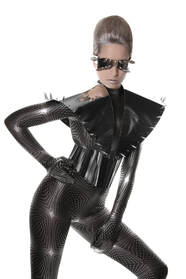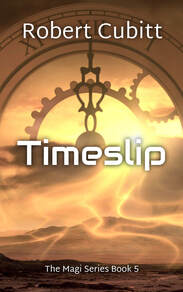 Never judge a book by it's cover. Every picture tells a story. Which of those two old sayings resonates most with you? For us it's the second, because book covers are supposed to tell a story and there is no doubt that readers make judgements about them. So what story is your book covers telling? When readers do searches for books, or even when they are just browsing through the listings, what is the first thing they see? It is one of two things – either a book’s title or its cover. Sometimes it’s both because the title is on the cover anyway. I’m not going to talk about titles. There are too many theories about what makes a good title and, so far as we can tell, one theory is as good as another. Here’s one we found, but there are hundreds more. But the same can’t be said for covers. They have to convey so much information in a simple image and, sometimes, it’s easy for them to convey the wrong information.  Take the book on the right which was, until recently, the cover for the first book in our Magi series. We had thought it was quite a good cover, which is why we stuck with it when we signed the author. That was until we got a bit of feedback that told us we were way off track with it. Someone had emailed us asking if we would be prepared to provide a few paperback copies of one of our books for discussion by their book club. They were raising money for charity through a small attendance fee and income from tea and cake sales and, once the books had been read, they would be sold second hand, also to raise money for charity.  Happy to make our contribution, we happened to have a few spare copies of The Magi lying around the office, so I emailed her a synopsis and the cover image. We were quite taken aback when the lady replied “We are a church group and aren’t in the least bit interested in a book about BDSM. Thanks for the offer but we’ll go elsewhere.” (If you are an innocent type who is unfamiliar with the term BDSM, we don’t suggest you Google it). We were puzzled by this response, so we emailed back asking what she meant, to which she replied that with the leather clad lady on the cover, it was clearly a book of an erotic nature and that BDSM was implied.  We emailed back to assure her that the book had no erotic content at all (sorry if you are disappointed by that) and peace was restored, but the book still wasn’t accepted because, with that cover, they didn’t want to sell it on their second-hand book stall. But we had learnt a valuable lesson. The cover was designed by a previous publisher, with whom we are acquainted, and I feel certain that he had no intention of implying that the book had anything to do with BDSM. But, looking at it in light of that response from the book club, I could now see what the lady was getting at. And the image of the leather clad woman appeared on the cover of all 9 books in the series, and on the box set. It was part of the “branding” of the series.  Then there are the other two elements used on the covers. The inclusion of the image of a distant galaxy is appropriate as it’s a sci-fi book. That was also part of the series branding. The third element, however, in this case an “electronic egg” changed with each book in the series, to tie in with the plot of the book. With doubt now weighing us down, we started to wonder about that suitability of that egg image, too. What did it suggest to the readers?  So, we asked a few of our readers for their opinions. The general consensus was that it was confusing. How could you have an electronic egg? What would an electronic egg do? Why was the egg floating in space? Was it some sort of spaceship? What had the egg to do with the woman? Was that the way babies were born in the book? Well, if the cover was causing as many questions as that, it clearly wasn’t doing its job of selling the book. As it happens, the answers to the questions are contained within the book but, of course, no one was going to buy the book to find that out if they were confused about it in the first place. One thing we know is that readers don’t like to be confused before they even read the first page. In fact, it’s only the readers of crime fiction (and not all of them) that are willing to be confused by their books.  So, we decided that (a) the book’s image sent out the wrong message to some people and (b) it confused other people. Which was, perhaps, why the book and the series hadn't been doing as well as it deserved. It is rather good, as many sci-fi readers have discovered (but you would expect us to say that). So, we set out to create 9 new book covers that presented a less confusing message. In fact, all we wanted the images to say was “this is a sci-fi book”. One or two of them do hint at the content, the ones for “Cloning Around” (Book 4) and “Timeslip” (Book 5 – image to the left), but the others are a little bit more generic.  If they say anything it’s “This is sci-fi and weird stuff will happen”. (BTW, you can find out more about the books shown on our "Books" page or by clicking on the images) So, what does your cover say about your book? Does it give out an unintentional message, the way ours sent out a BDSM message? Does it confuse the reader? Is it different enough to make it stand out from the crowd? Because that third question is also important. When readers do a search by genre, they get presented with list after list of books, which they then scroll through. The cover of your book has to stand out from the crowd if you want the reader to click on it and find out more. If the cover looks too similar to the ones above and below it, the reader’s eyes are going to slide right past. Yes, do be bold, be different; but make sure that the key message about your book is plainly understood from its cover image. If you have enjoyed this blog, or found it informative, then make sure you don’t miss future editions. Just click on the button below to sign up for our newsletter. We’ll even send you a free ebook for doing so.
0 Comments
Leave a Reply. |
AuthorThis blog is compiled and curated by the Selfishgenie publishing team. Archives
June 2025
|
 RSS Feed
RSS Feed